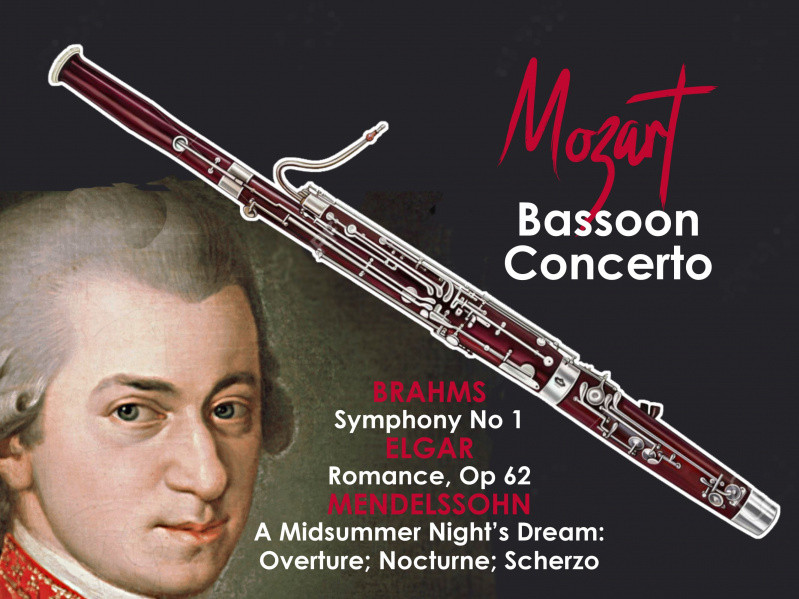

ORCHESTRAL CONCERT
10 MAY, 2025 at 7.30 pm
Alderley Edge Methodist Church - Chapel Rd, Alderley Edge SK9 7DU
MENDELSSOHN
A Midsummer Night’s Dream:
Overture; Nocturne; Scherzo
MOZART
Bassoon Concerto
Soloist: Laurence Perkins
ELGAR
Romance, Op 62
BRAHMS
Symphony No 1
Conductor:
Xinjie Yang

Mendelssohn composed his Overture to Shakespeare’s A Midsummer Night’s Dream when he was only 17 years of age. The rest of the work, written at the request of the King of Prussia, followed 13 years later. This enchanting work is amongst Mendelssohn’s most enduring compositions.
The first movement of Mozart’s Bassoon Concerto is written in sonata form and showcases what the bassoon can do; it’s agility and the ability to trill, leap (nearly two octaves in this case), repeat notes rapid-fire, sing lyrically and sit comfortably on prominent low notes. Mozart was aware that the bassoon is not the most forward of instruments so the soloist takes a more subservient role than is usual in a concerto and does not always articulate key melodies until after they have been introduced by the orchestra, which develops a lively conversation between soloist and orchestra. The second movement is a slow and lyrical sonata, which contains a theme dating back to notes made by an 8 year old Mozart and which later also featured in the Countess’ aria ‘Porgi, Amor’ at the beginning of the second act of Mozart’s opera, The Marriage of Figaro. The final movement is a minuet, based on a standard courtly dance rather than a more strenuous ballroom dance.
Elgar’s Romance, Op 62 is a short work for bassoon and orchestra by Edward Elgar dating from 1909–10. It was composed for the principal bassoonist of the London Symphony Orchestra, Edwin F James, who gave the first performance in February 1911 at Hereford, with the composer conducting.
Brahms composed his Symphony No 1 in his early 40s. Often regarded as ‘Beethoven’s Tenth’, the intense work is of epic proportions. Conscious that he was following in Beethoven’s footsteps, Brahms struggled for many years to complete the work. In 1862 his soul mate and muse Clara Schumann wrote to mutual friend Joseph Joachim: “Johannes sent me the other day—imagine the surprise!—the first movement of a symphony. The movement is full of wonderful beauties, and the themes are treated with a mastery which is becoming more and more characteristic of him.” The symphony acquired a grandiloquent introduction and two relatively slender inner movements—but remained maddeningly, frustratingly incomplete. The obstacle was the finale, which had to provide a worthy counterbalance to the magnificence of the first movement. Brahms wasn’t about to attempt the high-wire act of introducing a grand new symphony unless he was certain he had that elusive concluding movement. It took until 1876, but he got there. The full gestation of Symphony No. 1 in C Minor, Op. 68 required 22 years—but it was well worth it,

Tickets
Buy your ticket(s) online NOW. You can use and debit or credit card, or pay by Paypal if you have a Paypal account. We charge a small booking fee.
Adult: £15
Under 18: £2.00
Upcoming Events (1)
Donate